Dacia Duster vs Peugeot 308 – Which one offers the better deal?
Everyday use, family trips or long-distance drives – here’s where the differences show.
Discover whether Dacia Duster or Peugeot 308 fits your lifestyle better.
Dacia Duster vs Peugeot 308: A Clash of Versatility and Style
In the compact car showdown between the Dacia Duster and the Peugeot 308, drivers face a decision between rugged versatility and refined elegance. Both models bring a unique set of strengths to the table, drawing in consumers with varied automotive needs. Let’s delve into the technical aspects and innovative features that define these two exciting vehicles.
Design and Body Type
The Dacia Duster is unmistakably an SUV, emphasizing functionality and durability. Its dimensions, spanning 4343 mm in length, make it a robust choice for those seeking adventure. With a height of up to 1661 mm, the Duster provides a commanding view of the road.
On the flip side, the Peugeot 308 is a sleek and sophisticated hatchback. It stretches slightly longer at 4367 mm, but it is significantly more compact in height at 1441 mm. With its precise lines and refined styling, the 308 is crafted for those with a taste for contemporary elegance.
Engine Options and Performance
The 2024 Dacia Duster offers a variety of engine types including LPG, full hybrid, and petrol mild-hybrid (MHEV) options. With power outputs ranging from 91 to 140 HP, the Duster is built for versatility, boasting amenities like all-wheel drive for off-road enthusiasts. Its top speeds vary, reaching up to 180 km/h, and acceleration from 0-100 km/h can occur in as little as 9.9 seconds.
Meanwhile, the Peugeot 308 provides a broad array of powertrains: petrol MHEV, diesel, plug-in hybrid, and even a fully electric variant. The power spectrum extends from 130 to an impressive 225 HP, with the electric model offering noteworthy emissions reductions. Acceleration is swift, with times as low as 7.6 seconds from 0-100 km/h, demonstrating the 308's adeptness at combining efficiency with performance.
Innovative Features and Technology
The Duster's appeal is rooted in simplicity and effectiveness, catering to those who appreciate no-frills transportation. The manual and automated manual transmissions complement its robust nature, while features like a trunk capacity of up to 517 liters underline its practicality.
Peugeot 308 shines with its technological prowess. It boasts dual-clutch automatic transmission, exemplifying smooth and efficient gear changes. The model also offers a substantial electric range of up to 419 km, catering to eco-conscious drivers. Its plug-in hybrid versions further aid in reducing the carbon footprint, highlighted by a CO2 efficiency class that peaks at A.
Fuel Efficiency and Environmental Impact
The Dacia Duster provides balanced fuel consumption, with rates as efficient as 5 L/100 km, though it does generate higher CO2 emissions, classed between D and E depending on the model.
Contrarily, the Peugeot 308 manages impressive consumption rates, particularly in its electric and plug-in hybrid models that achieve as low as 1.3 L/100 km. Its CO2 output is remarkably minimized, ranging from 0 to a modest 133 g/km, reinforcing its eco-friendly edge.
Conclusion: Selecting Your Perfect Companion
The choice between the Dacia Duster and the Peugeot 308 ultimately hinges on your lifestyle and preferences. The Duster stands out for those who relish outdoor adventures and require a vehicle that can withstand the rigors of diverse terrains. Meanwhile, the Peugeot 308 caters to the urbanite and environmentally conscious driver, offering stylish design and cutting-edge technology.
Both models have cemented their identities within the compact car segment, marking their territories with distinctive appeals and technological prowess. Whether your journey leads you off the beaten path or through the bustling city streets, the Duster and 308 promise to deliver enjoyable, efficient drives.
Here’s where it gets real: The technical differences in detail
Costs and Efficiency: Looking at overall running costs, both models reveal some interesting differences in everyday economy.
Dacia Duster has a convincingly advantage in terms of price – it starts at 16300 £, while the Peugeot 308 costs 29200 £. That’s a price difference of around 12960 £.
Fuel consumption also shows a difference: the Peugeot 308 manages with 0.80 L and is therefore clearly more efficient than the Dacia Duster with 5 L. The difference is about 4.20 L per 100 km.
Engine and Performance: Power, torque and acceleration say a lot about how a car feels on the road. This is where you see which model delivers more driving dynamics.
When it comes to engine power, the Peugeot 308 has a evident edge – offering 195 HP compared to 140 HP. That’s roughly 55 HP more horsepower.
In acceleration from 0 to 100 km/h, the Peugeot 308 is noticeable quicker – completing the sprint in 7.60 s, while the Dacia Duster takes 9.90 s. That’s about 2.30 s faster.
In terms of top speed, the Peugeot 308 performs slightly better – reaching 225 km/h, while the Dacia Duster tops out at 180 km/h. The difference is around 45 km/h.
There’s also a difference in torque: the Peugeot 308 pulls distinct stronger with 300 Nm compared to 230 Nm. That’s about 70 Nm difference.
Space and Everyday Use: Whether family car or daily driver – which one offers more room, flexibility and comfort?
Both vehicles offer seating for 5 people.
In curb weight, the Dacia Duster is minimal lighter – 1351 kg compared to 1436 kg. The difference is around 85 kg.
In terms of boot space, the Dacia Duster offers noticeable more room – 517 L compared to 412 L. That’s a difference of about 105 L.
In maximum load capacity, the Dacia Duster performs to a small extent better – up to 1609 L, which is about 286 L more than the Peugeot 308.
When it comes to payload, Peugeot 308 somewhat takes the win – 510 kg compared to 430 kg. That’s a difference of about 80 kg.
All in all, the Peugeot 308 shows itself to be is largely superior and secures the title of DriveDuel Champion.
It impresses with the more balanced overall package and proves to be the more versatile companion for everyday use.
Dacia Duster
The Dacia Duster represents a compelling choice for those seeking an affordable yet robust SUV in the market. With its rugged design and practicality, it tackles both urban commutes and off-road adventures with ease. Inside, the vehicle offers a spacious cabin that ensures comfort, while maintaining its reputation for delivering excellent value for money.
details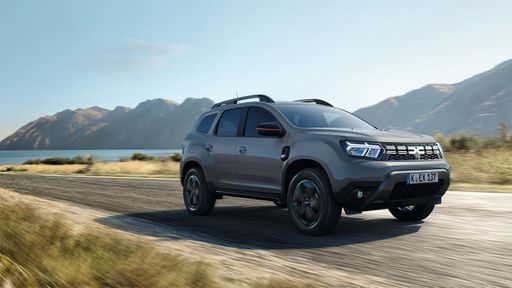 @ dacia-presse.de
@ dacia-presse.de
 @ dacia-presse.de
@ dacia-presse.de
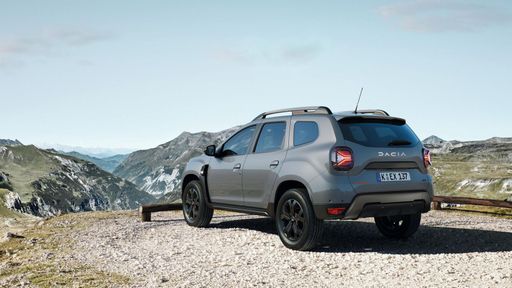 @ dacia-presse.de
@ dacia-presse.de
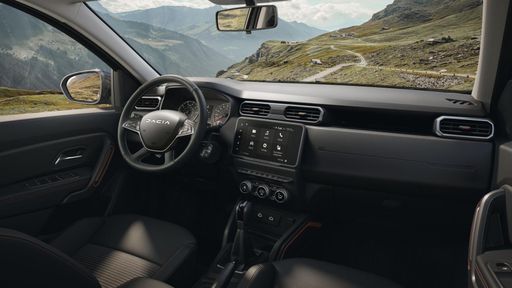 @ dacia-presse.de
@ dacia-presse.de
Peugeot 308
The Peugeot 308 presents a refined blend of style and sophistication, making it a compelling option for anyone in search of a dynamic yet practical vehicle. Its sleek design is complemented by a thoughtfully crafted interior that ensures both driver and passengers travel in comfort and elegance. Moreover, the 308 offers a responsive driving experience, combining agility with a sense of security on the road.
details @ media.stellantis.com
@ media.stellantis.com
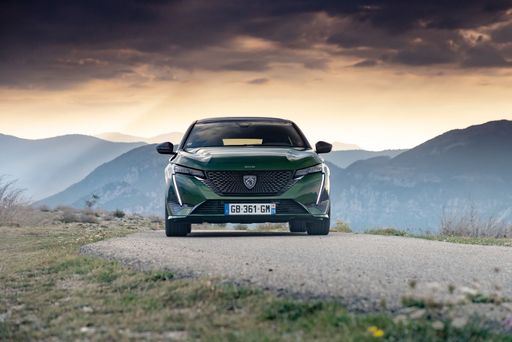 @ media.stellantis.com
@ media.stellantis.com
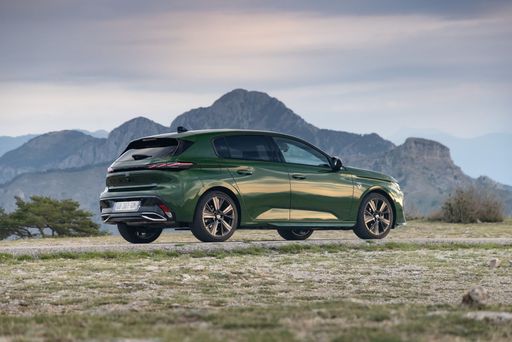 @ media.stellantis.com
@ media.stellantis.com
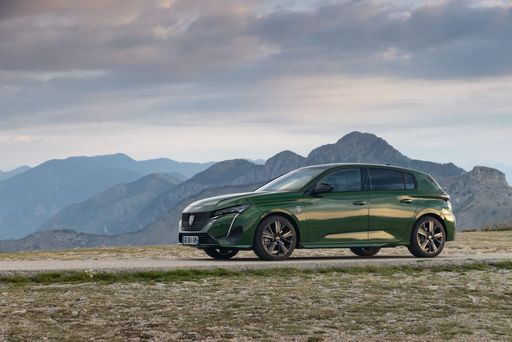 @ media.stellantis.com
@ media.stellantis.com
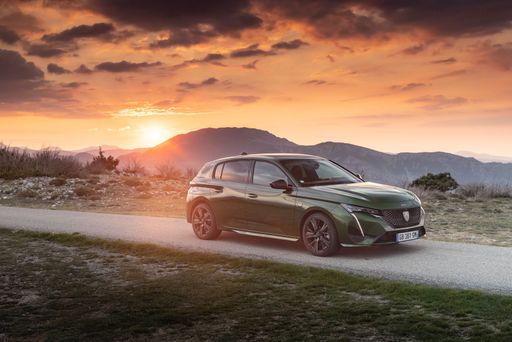 @ media.stellantis.com
@ media.stellantis.com
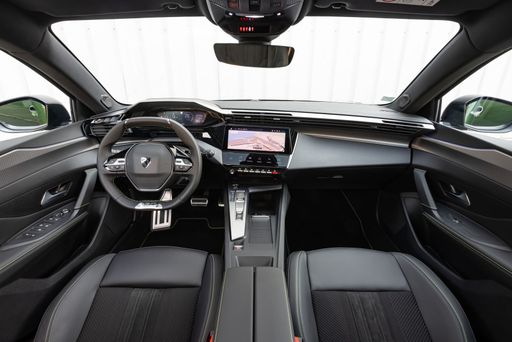 @ media.stellantis.com
@ media.stellantis.com

|

|
|
|
|
Costs and Consumption |
|
|---|---|
|
Price
16300 - 24800 £
|
Price
29200 - 41800 £
|
|
Consumption L/100km
5 - 7.6 L
|
Consumption L/100km
0.8 - 5.1 L
|
|
Consumption kWh/100km
-
|
Consumption kWh/100km
15.20 kWh
|
|
Electric Range
-
|
Electric Range
78 - 419 km
|
|
Battery Capacity
0.60 kWh
|
Battery Capacity
51 kWh
|
|
co2
113 - 148 g/km
|
co2
0 - 133 g/km
|
|
Fuel tank capacity
49 - 55 L
|
Fuel tank capacity
42 - 53 L
|
Dimensions and Body |
|
|---|---|
|
Body Type
SUV
|
Body Type
Hatchback
|
|
Seats
5
|
Seats
5
|
|
Doors
5
|
Doors
5
|
|
Curb weight
1351 - 1465 kg
|
Curb weight
1436 - 1759 kg
|
|
Trunk capacity
430 - 517 L
|
Trunk capacity
314 - 412 L
|
|
Length
4343 mm
|
Length
4367 mm
|
|
Width
1813 mm
|
Width
1852 mm
|
|
Height
1656 - 1661 mm
|
Height
1441 mm
|
|
Max trunk capacity
1545 - 1609 L
|
Max trunk capacity
1258 - 1323 L
|
|
Payload
414 - 430 kg
|
Payload
431 - 510 kg
|
Engine and Performance |
|
|---|---|
|
Engine Type
LPG, Full Hybrid, Petrol MHEV
|
Engine Type
Diesel, Electric, Petrol MHEV, Plugin Hybrid
|
|
Transmission
Manuel, Automatic
|
Transmission
Automatic
|
|
Transmission Detail
Manual Gearbox, Automated Manual
|
Transmission Detail
Automatic Gearbox, Reduction Gearbox, Dual-Clutch Automatic
|
|
Drive Type
Front-Wheel Drive, All-Wheel Drive
|
Drive Type
Front-Wheel Drive
|
|
Power HP
91 - 140 HP
|
Power HP
130 - 195 HP
|
|
Acceleration 0-100km/h
9.9 - 14 s
|
Acceleration 0-100km/h
7.6 - 10.6 s
|
|
Max Speed
160 - 180 km/h
|
Max Speed
170 - 225 km/h
|
|
Torque
160 - 230 Nm
|
Torque
230 - 300 Nm
|
|
Number of Cylinders
3 - 4
|
Number of Cylinders
3 - 4
|
|
Power kW
67 - 104 kW
|
Power kW
96 - 144 kW
|
|
Engine capacity
999 - 1598 cm3
|
Engine capacity
1199 - 1598 cm3
|
General |
|
|---|---|
|
Model Year
2024 - 2025
|
Model Year
2023 - 2025
|
|
CO2 Efficiency Class
D, C, E
|
CO2 Efficiency Class
D, A, C, B
|
|
Brand
Dacia
|
Brand
Peugeot
|
What drivetrain options does the Dacia Duster have?
The Dacia Duster is offered with Front-Wheel Drive or All-Wheel Drive.
The prices and data displayed are estimates based on German list prices and may vary by country. This information is not legally binding.
